- Navigator
- Featured Indicator
- Real Estate Development and Housing
 The homeownership rate in America has shown slow and steady gains over the past five years, reaching 66% at the end of 2022 — a level not seen since 2011. And among renters, the desire to join the ranks of homeowners remains strong. A recent survey by NerdWallet suggests that around 28 million Americans hope to purchase a home in the next 12 months.
The homeownership rate in America has shown slow and steady gains over the past five years, reaching 66% at the end of 2022 — a level not seen since 2011. And among renters, the desire to join the ranks of homeowners remains strong. A recent survey by NerdWallet suggests that around 28 million Americans hope to purchase a home in the next 12 months.
Considering the number of new and existing home sales combined has not registered above 7 million for over a decade, there is bound to be a great number of would-be buyers who will not be able to reach their homeownership goals. Most likely, the biggest challenge holding these households back will be affordability.
To better examine housing affordability throughout the country, the Federal Reserve Bank of Atlanta has developed the Home Ownership Affordability Monitor (HOAM), an interactive tool that measures the ability of households earning a median income to afford a median-priced home. These elements are then indexed against the common HUD affordability standard, which specifies that the cost of housing should not exceed 30% of a household’s net income. The point where the cost of ownership exactly equals 30% of the median household income is given the index value of 100 in the HOAM and it is referred to as the Affordability Threshold.
What is the Data Telling Us?
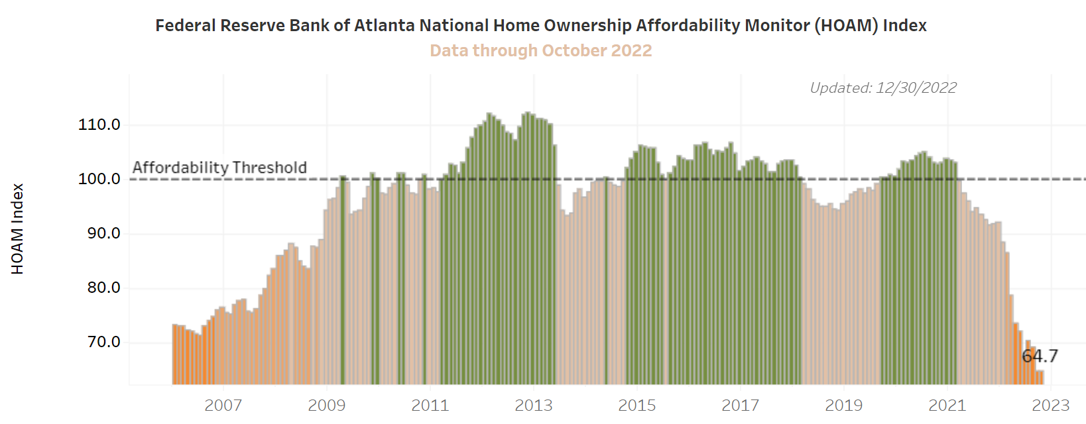 From late 2019 through early 2021 the country enjoyed an increase in home ownership affordability and the HOAM index stood well over 100 during this time. By the end of 2022, however, affordability had taken a sharp tumble, as the index value dropped below 65.
From late 2019 through early 2021 the country enjoyed an increase in home ownership affordability and the HOAM index stood well over 100 during this time. By the end of 2022, however, affordability had taken a sharp tumble, as the index value dropped below 65.
The degree of this most recent decline in affordability was driven by three major factors — income change, interest rate change, and price change — which the HOAM nicely illustrates using a highly intuitive visualization.
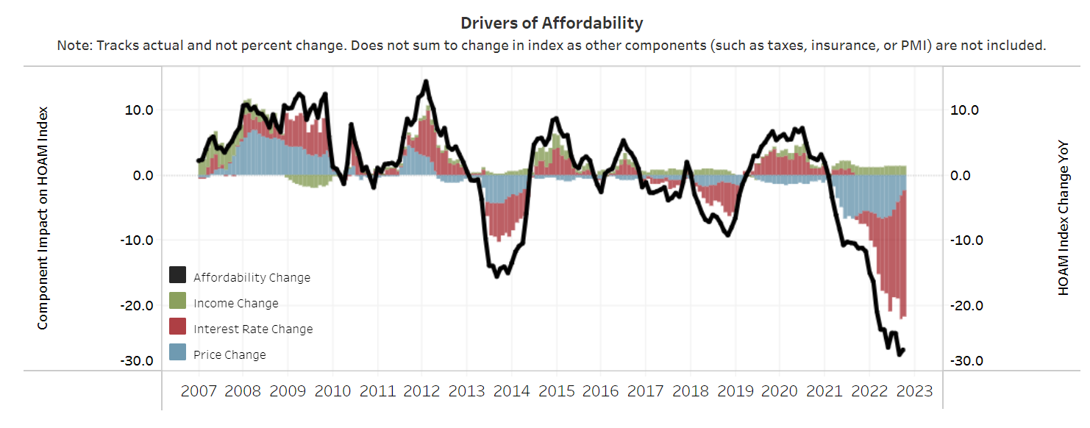 Over the first half of 2021, a rapid increase in home prices cut deeply into consumers’ ability to buy a home and these rising prices remained the sole negative influence on the HOAM index well into the third quarter of 2021. During this same time period, rising incomes and accommodating lending rates managed to slightly offset the negative effects of increasing prices.
Over the first half of 2021, a rapid increase in home prices cut deeply into consumers’ ability to buy a home and these rising prices remained the sole negative influence on the HOAM index well into the third quarter of 2021. During this same time period, rising incomes and accommodating lending rates managed to slightly offset the negative effects of increasing prices.
Beginning in October 2021, however, the underlying economic factors began to shift. Homeownership affordability took a big hit from rapidly increasing interest rates — greater even than the deterioration resulting from continued growth in home prices.
Beyond this national profile of affordability, the HOAM also provides insight into local markets. This allows for comparisons across different areas of the country, controlling for highly differentiated home prices and income levels.
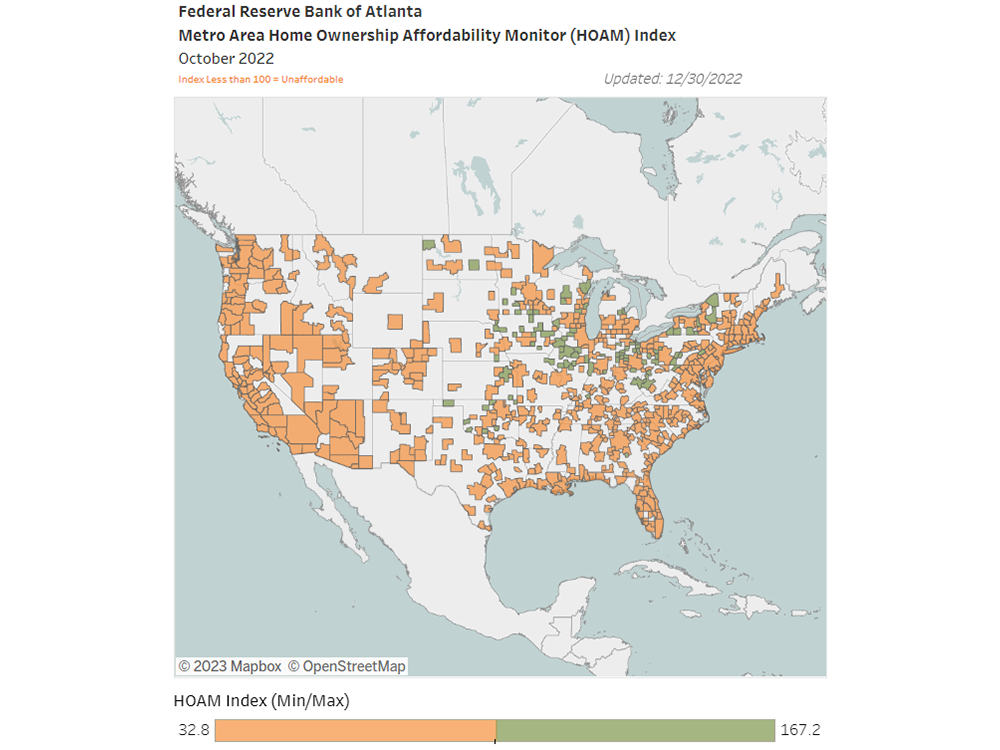
Two market areas where Camoin Associates has recently worked with local governments to address problems of housing affordability and availability nicely illustrate this differentiation.
Austin, Texas, was a leading metro area in terms of population growth when housing demand surged during the pandemic. The area’s affordability had largely tracked close to the national rate, but home prices soared in early 2021, reducing affordability and driving the percent of a household’s income needed to finance a median-priced home in Austin well above the US average share.
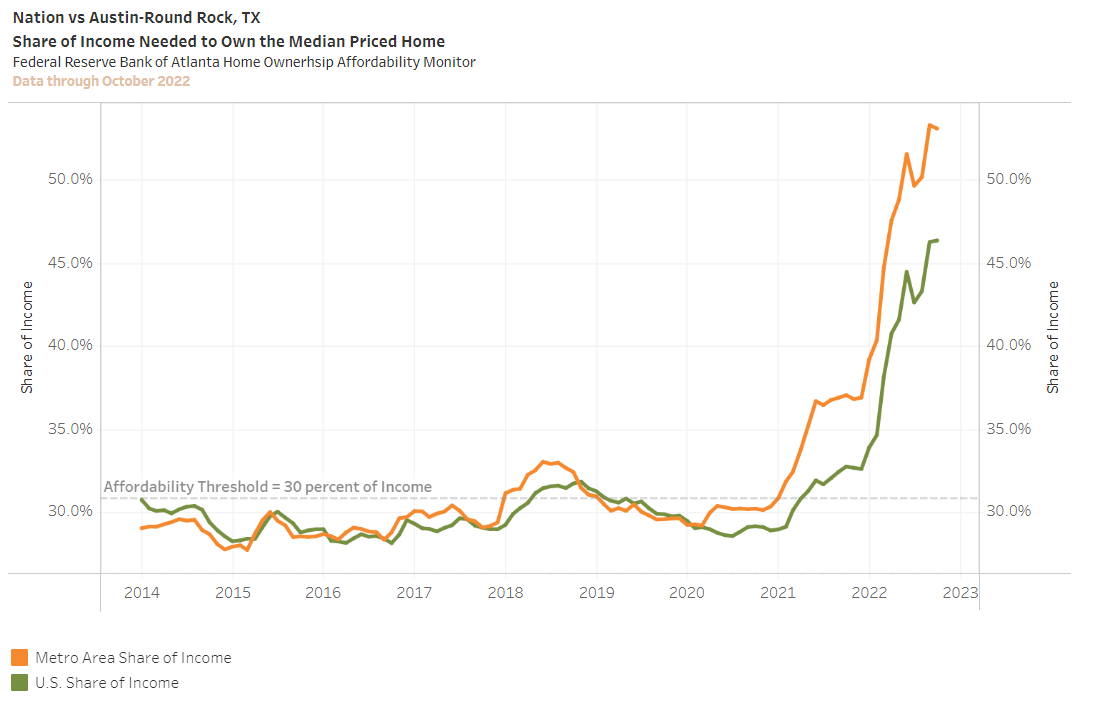 The upstate New York community of Plattsburgh has experienced a similar overall decline in affordability resulting from higher interest rates. In contrast to the measures reported in Austin, however, the HOAM index only recently bumped up against the 30% Affordability Threshold. So, despite the recent run up in the index, this home buying market remains remarkably affordable, due in large part to much more muted price levels.
The upstate New York community of Plattsburgh has experienced a similar overall decline in affordability resulting from higher interest rates. In contrast to the measures reported in Austin, however, the HOAM index only recently bumped up against the 30% Affordability Threshold. So, despite the recent run up in the index, this home buying market remains remarkably affordable, due in large part to much more muted price levels.
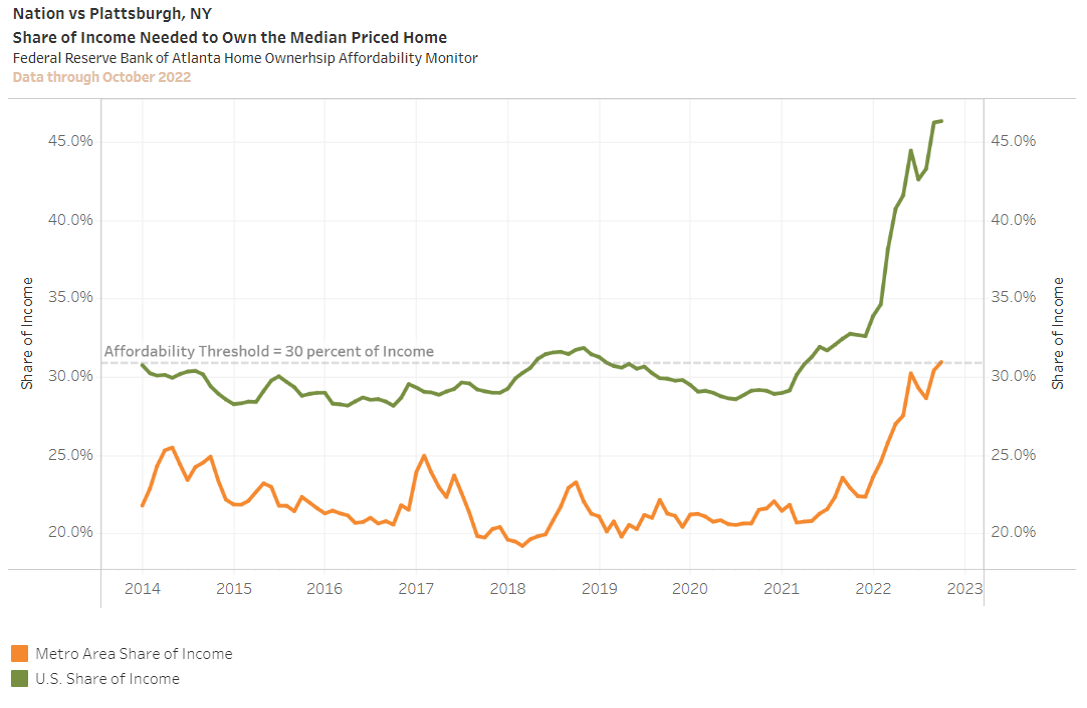
Why is Homeownership Affordability Data Important?
Homebuyers and policymakers, alike, have witnessed declining affordability in their communities. Using the HOAM tool provides a clear sense as to how multiple factors are affecting local housing markets, and to what degree these are localized issues or part of larger national trends.
The HOAM index will also indicate when the homebuying market turns the corner and affordability begins to show improvements. Recent reports describe a softening of home prices in many parts of the country, and some market watchers are predicting significant declines over the coming year. Going forward, the HOAM index will in turn reflect the degree that this anticipated waning of home prices benefits buyers.
Once inflationary pressures ease, monetary policy will begin to ease, allowing lending rates to decrease. Hopes are that the overall economy will see a “soft landing,” while maintaining the current strong levels of employment and income growth. Should all of this come to pass, home ownership affordability will be greatly enhanced, and this will be reflected in the HOAM index.
Camoin Associates is a national leader in using research and data analysis to help communities and organizations understand where they are now and develop actionable goals designed to get them where they want to be. Learn more about our services.





